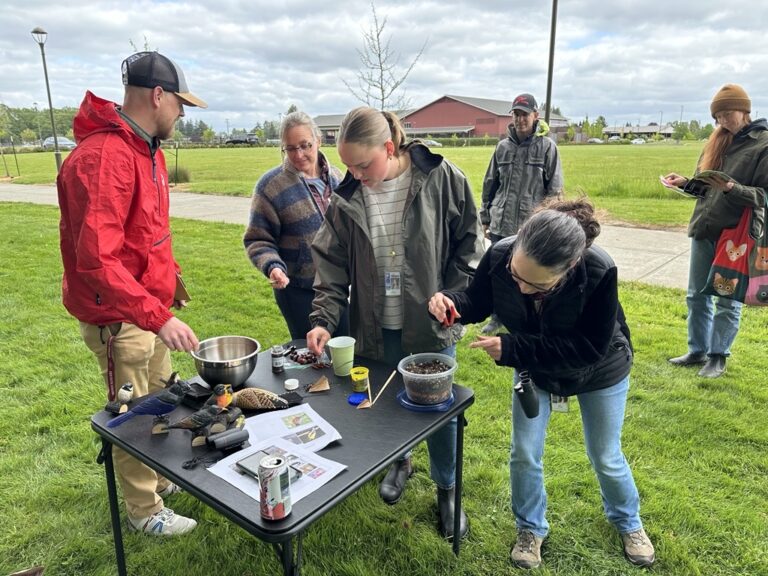What do eighth-grade students who have lived through a pandemic and Douglas fir trees have in common?
Resilience.
That was the message Lamont School District Superintendent Charles Pierce shared with the graduating class of 2023. On Arbor Day, students and staff gathered to plant a Douglas fir on campus to commemorate their perseverance in the face of challenges. The tree will serve as a lasting symbol for alumni and future students alike.
“Douglas firs are able to withstand elements of weather that other trees cannot,” says Pierce. “We researched the best trees to plant in this area and I gave them the example of the Tacoma Dome, which is one of the largest wooden structures in the world – and it’s built out of Douglas fir. Like the tree, our graduating class is going to be able to withstand pressures that others cannot.”
“This is a broader approach to student learning versus just reading a textbook and taking a quiz. It’s holistic. There are so many elements that support the concept of the science of trees and soil nutrients, and the hands-on experience makes the learning much richer.”
— Charles Pierce, Lamont School District Superintendent

Pierce was one of 32 Washington State educators who attended PEI’s FieldDesign: Community Forestry and Environmental Justice workshop in February. Participants considered ways to incorporate trees as tools in designing solutions to human and environmental health problems. Using PEI’s FieldDesign model, they explored tree benefits, learned about user-friendly (and free!) technical tools available through iTree, and heard from a variety of presenters with expertise on the topic.
During the February workshop, Nate Ziegler, an educator in Spokane, explained his approach in guiding student action work related to urban tree canopy and participants also heard from forestry professional Justyce Brant with The Lands Council, who presented the SpoCanopy Program in Spokane.
As part of PEI’s professional learning model, workshops are delivered first at a statewide level to introduce the topic, then at a regional level to engage community partners. In other regions, PEI worked with Lowell Wyse, Executive Director of Tacoma Tree Foundation, who discussed the urban forest crisis taking place within that community and Jessica George with Vancouver Urban Forestry co-presented with Ian Bonham from Friends of Trees on their partnered work.
The FieldSTEM model appealed to Pierce, who leads one of the smallest school districts in Washington State located in a remote region between Spokane and Moses Lake. At last count, the district has 28 students. “We wanted to do something to support the environment and also to give back to the community,” he says. “I wanted it to be something permanent and something we could reflect on.”
When a board member from the region commented that he remembered the day a now 50-year-old tree was planted at the school, something clicked. “He was attaching that tree to his time at the school,” Pierce explains. “With that, hopefully, came the good memories of his time on campus.” In addition to participating in the Douglas fir planting, each graduating student got a sapling to take home and plant with support from Rock Lake Conservation District.
With both the saplings and the campus tree, students have an opportunity to connect their personal experiences with nature, creating a deeper and more contextualized graduation ritual. “It’s a broader approach to student learning versus just reading a textbook and taking a quiz,” Pierce maintains. “It’s holistic. There are so many elements that support the concept of the science of trees and soil nutrients, and the hands-on experience makes the learning much richer.”




